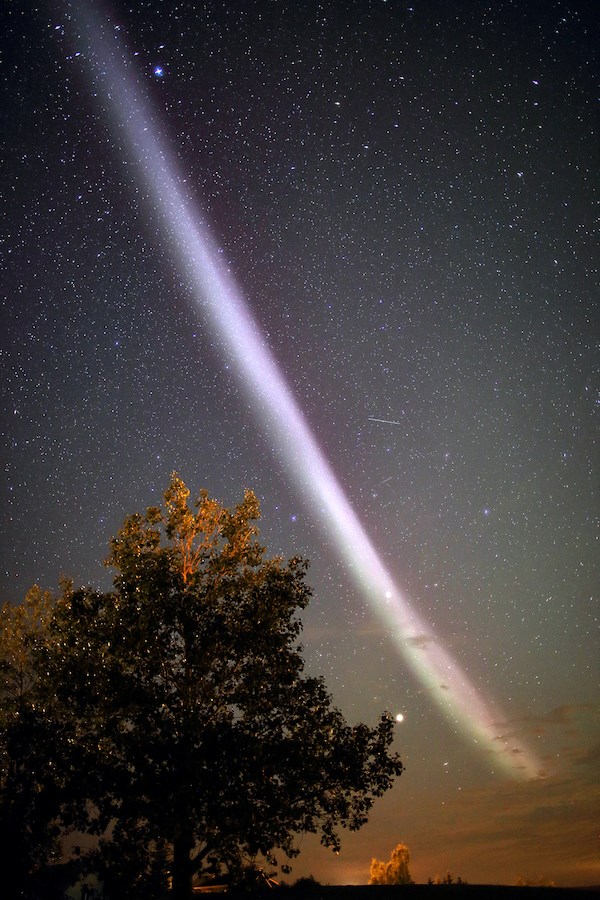
By Kristina Bergen | Special to the Fitzhugh
The appearance of yellow leaves and the first frosty breaths of fall herald longer nights, darker skies, dancing northern lights, and better chances of catching the newly-discovered phenomenon now known as STEVE in the night sky.
Long thought to be part of the aurora, STEVE is actually a narrow purplish green arc that flows for hundreds of kilometres in an east-west alignment, usually appearing alongside northern lights for 20 minutes to an hour.
Although this atmospheric phenomenon has been observed by aurora photographers for decades, it wasn’t officially named or studied until 2016 after the Alberta Aurora Chasers christened it STEVE.
How does it work?
This violet band of skyglow works differently than the northern lights – aurora light up the sky when charged particles from the sun hit atoms and molecules in Earth’s atmosphere, causing them to glow.
STEVE works like an incandescent light bulb (for those of you who still know what that is...).
Instead of electricity heating a filament until it's hot enough to glow, in STEVE’s case, a river of charged particles in the Earth’s ionosphere collide creating friction that heats the particles and causes them to emit purple light.
How to see it
At the Jasper Planetarium, we get a good STEVE sighting about once a month, not factoring in cloud cover.
While STEVE doesn’t appear during every auroral display, it's much more likely to show up when the northern lights are out.
So you want to look north when the aurora are dancing and check the edges of the northern lights’ display for a long, straight band of purple light off to the side, somewhat by itself – odds are that’s STEVE.
We use spaceweather.com for best predictions of such outbursts.
How is it different from the aurora?
Three things that distinguish STEVE from the northern lights are its shape, particular violet colour, and its ability to be viewed much farther south than aurora can be seen. Which means we should be enjoying several STEVE sightings here in Jasper Dark Sky Preserve over the coming months.
Oh and the name? Yeah, that’s a tongue in cheek tip-of-the-hat to a scene in the movie Over the Hedge, where an animal hearing a voice beyond a hedge says they wouldn’t be afraid of it if it had a name and another creature randomly suggests ‘Steve’.
Or you could just call it by its backronym (yes, that’s a real thing...) - Strong Thermal Emission Velocity Enhancement, like NASA does.
Kristina Bergen is manager of strategic initiatives with the Jasper Planetarium. The first name of her favourite uncle is Steve, but the family calls him Mark. Weird but true...



